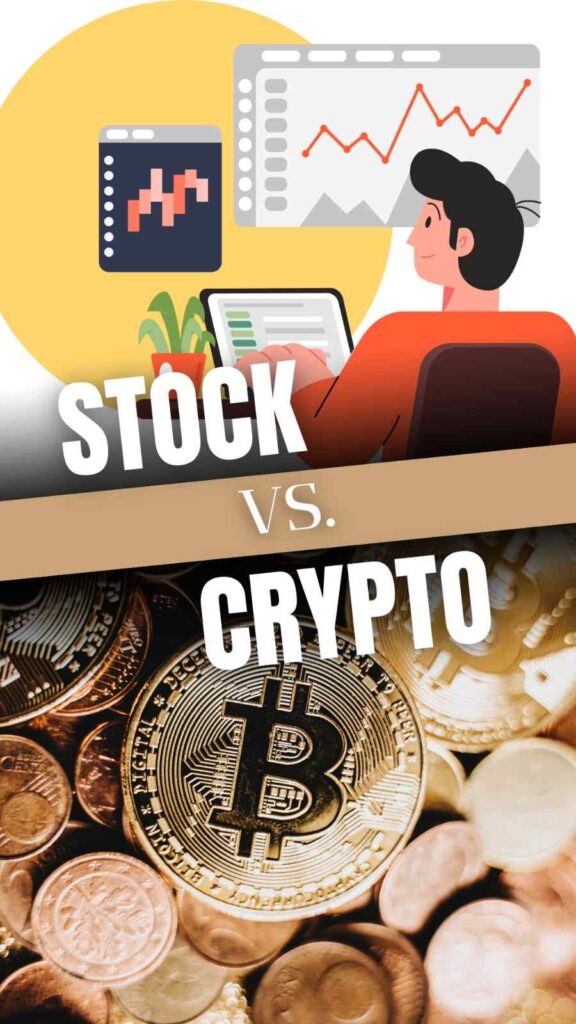
Bitcoin (CRYPTO: BTC), the world’s most famous cryptocurrency, recently crossed the $100,000 milestone, leaving many investors wondering: Can Bitcoin split like popular tech stocks? After all, companies like Apple and Tesla often announce stock splits to make their shares more affordable to average investors.
At $100,000 per Bitcoin, the price tag can feel overwhelming. But is a Bitcoin split even possible? And would such a split benefit investors? Let’s dive into the details and uncover the answers.
Stock Splits vs. Crypto Splits 📊
Stock splits occur when a company reduces the price of its shares by increasing the number of shares in circulation. For example, in a 2-for-1 stock split, the total number of shares doubles while the price per share is cut in half. If you owned 400 shares at $2 each, you’d now own 800 shares at $1 each, but the total value remains the same.

Cryptocurrencies like Bitcoin, however, don’t require such splits. Why? Because Bitcoin is already divisible into smaller units called satoshis. Each Bitcoin consists of 100 million satoshis, meaning investors can buy fractional amounts.
For example, even if Bitcoin costs $100,000, you don’t need to buy an entire Bitcoin. Many exchanges allow you to invest as little as $1, enabling you to own a tiny fraction (like 0.00001 BTC).
Can Bitcoin Split Like a Stock? 🤔
Technically, a Bitcoin split could happen, but it’s extremely unlikely. For Bitcoin to split, its underlying code would need to change. Since Bitcoin is a decentralized network without a CEO, board of directors, or centralized authority, this change would require consensus from the entire Bitcoin community—a nearly impossible task.
Bitcoin’s decentralized nature is one of its biggest strengths. There’s no central body to decide on a split, and the original creator, known only as Satoshi Nakamoto, remains anonymous. So, unlike a stock split controlled by a company, a Bitcoin split would face enormous hurdles due to its decentralized governance structure.
What About Hard Forks? 🔗
While a traditional stock-style split is unlikely, Bitcoin has experienced what are known as hard forks.Hard forks occur when developers disagree on how Bitcoin should function. These disagreements lead to changes in the blockchain’s code, creating two separate blockchains and two unique tokens. This process is similar to a split but has different mechanics.

For example, Bitcoin Cash (CRYPTO: BCH) emerged from a Bitcoin hard fork in 2017. The developers behind Bitcoin Cash wanted to increase the block size, allowing for more transactions per block. While Bitcoin Cash gained traction initially, it remains far behind Bitcoin, with a market cap of around $8.7 billion compared to Bitcoin’s $2.1 trillion.
Since Bitcoin launched in 2009, there have been nearly 100 hard forks. Most were technical upgrades or alternative versions of Bitcoin that didn’t gain popularity. Investors overwhelmingly prefer the original Bitcoin, reinforcing its status as the dominant cryptocurrency.
What Are Bitcoin Halvings? 🪙
Another common term that confuses some investors is Bitcoin halving. Despite sounding like a split, it’s entirely different.

Bitcoin halvings occur every four years and are built into Bitcoin’s code. During a halving, the rewards paid to Bitcoin miners are reduced by 50%. This slows down the creation of new Bitcoin, ensuring that the total supply remains scarce.
Halvings are crucial because Bitcoin has a fixed lifetime supply of 21 million coins. This limit is fundamental to Bitcoin’s value, making it resistant to inflation. Unlike fiat currencies that can be printed in unlimited quantities, Bitcoin’s supply is predictable and finite.
For example, the 2024 Bitcoin halving reduced miner rewards from 6.25 BTC to 3.125 BTC per block. This scarcity drives demand and helps Bitcoin maintain its appeal as “digital gold.”
Why Bitcoin Won’t Split 🛑
At the end of 2024, BlackRock (NYSE: BLK) released a video suggesting that Bitcoin’s fixed supply might eventually need to increase to accommodate growing demand. This sparked outrage in the Bitcoin community.

Bitcoin purists see the 21 million coin limit as a core principle of the cryptocurrency. Changing this would undermine its decentralized nature and resistance to external influence. The backlash highlighted just how important this supply cap is to Bitcoin’s identity.
Unlike stocks, where a split can make shares more accessible, Bitcoin’s divisibility into satoshis already solves the problem of affordability. Whether Bitcoin trades at $10,000 or $100,000, investors can still buy small amounts.
Key Takeaways for Investors 📌
- Bitcoin is unlikely to split like a stock. Its decentralized nature makes such a change nearly impossible.
- Hard forks are the closest thing to a split, but they result in entirely new tokens rather than changes to Bitcoin itself.
- Bitcoin halvings reduce miner rewards, maintaining its scarcity and value over time.
- The fixed supply of 21 million coins is non-negotiable and central to Bitcoin’s appeal.

Bitcoin’s value lies in its predictability, decentralization, and limited supply. While stocks split to attract more investors, Bitcoin’s divisibility into satoshis already makes it accessible to everyone, regardless of price.
Want to stay ahead in the world of crypto and forex? Subscribe to the AlgoDeltaFx blog for expert insights, trading tips, and the latest updates, delivered straight to your inbox. Don’t miss out—join our community today!
Disclaimer: This article is for informational purposes only and not financial advice. Always do your own research before investing in cryptocurrencies.
source : finance.yahoo ,dreamstime , fortune

